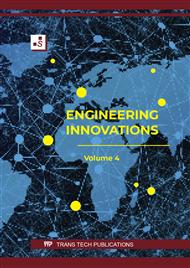p.1
p.9
p.15
p.21
p.31
p.37
p.47
Artificial Intelligence Predictions Effect of Loading Rate, Crack Width and Crack Length Ratio on Mode I Fracture Toughness of PMMA
Abstract:
Present, artificial intelligence methods play a huge role in solving complex engineering problems such as the fracture toughness of materials, which is one of the parameters to be considered for engineering design. Fracture toughness tests can be prepared materials and test configured in a variety of ways, resulting in different fracture toughness depending on the preparation method. In this study, fracture toughness of PMMA under the effect of loading rate is one of the testing configs that can be adjusted according to the actual load characteristics of the material and the crack geometry (crack width and crack length ratio) according to crack preparation to test specimens and the effect of these factors was predicted with generalized regression neural network (GRNN) and Gaussian processes regression (GPR) models which are one of the artificial intelligence models, compared to traditional fracture toughness predictions. The results showed that artificial intelligence prediction was able to more accurately predict the effect of the factors studied on the fracture toughness of PMMA compared to the traditional fracture toughness prediction.
Info:
Periodical:
Pages:
15-20
Citation:
Online since:
February 2023
Authors:
Keywords:
Permissions:
Share:
Citation:



